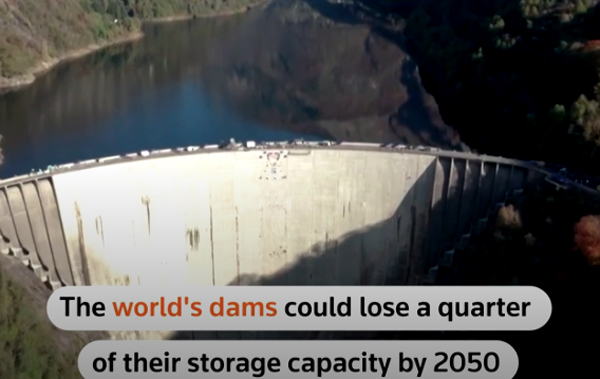
Reporting by David Stanway, Reuters
SHANGHAI
EnergiesNet.com 01 12 2023
Watch video: UN research: World’s dams to lose a quarter of storage capacity by 2050
Nearly 50,000 large dams worldwide could lose more than a quarter of their storage capacity by 2050 as a result of sedimentation build-ups, eroding global water and energy security, according to United Nations research on Wednesday.
Dam capacity is expected to drop from 6 trillion cubic metres (cu m) to 4.655 trillion cu m by 2050, and action must be taken to address the problem and protect vital storage infrastructure, the United Nations University said.
Silt accumulates in reservoirs as a result of the disruption of natural water flows. It can cause damage to hydroelectric turbines and cut power generation.
Impeding sediment flows along a river can also make upstream regions more prone to flooding and erode downstream habitats.
The U.N. study looked at data from more than 47,000 dams in 150 countries and said 16% of original capacity had already been lost. It said the United States is facing losses of 34% by 2050, with Brazil estimated to lose 23%, India 26% and China 20%.

Critics have long warned that the long-term social and environmental costs of giant dams far outweigh their benefits.
Vladimir Smakhtin, director of the UN University’s Institute for Water, Environment and Health and one of the study’s authors, said dam building worldwide had already declined significantly, with around 50 a year now being built, compared to 1,000 in the middle of the last century.
“I would argue that the question we should now be asking is what are the alternatives to dams – including in generating power – considering that they are being phased out,” he said.
China continues to dam major rivers, with hydropower a key part of its plans to cut fossil fuel use and control greenhouse gas emissions, but projects like the Three Gorges – the world’s biggest hydroelectric facility – have been socially and environmentally disruptive.
Dams built by China on the Mekong river have also disrupted the flow of sediment into downstream countries, transforming the landscape and jeopardising the livelihoods of millions of farmers, according to Reuters research last year.
Reporting by David Stanway; Editing by Kim Coghill
reuters.com01 11 2023











